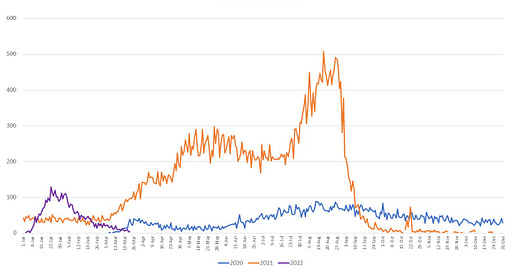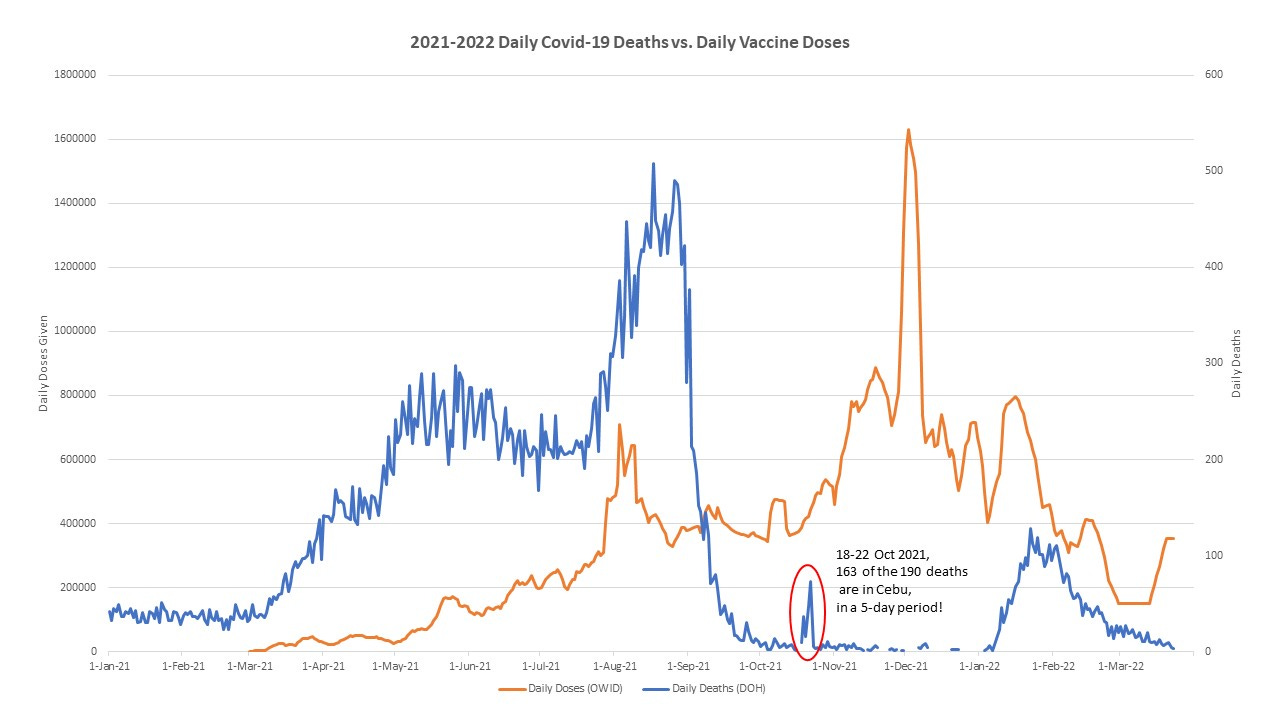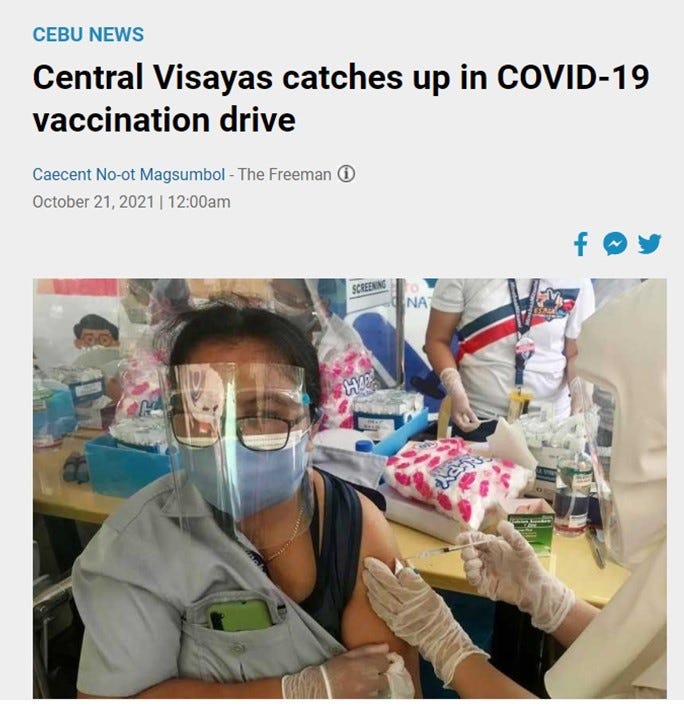Evaluation of Philippines Covid-19 by Date of Death Data: A Cebu Case Study - Series 2
A standout Covid-19 attributed death spike is observed in the five Monday to Friday days from 18-22 October 2021, with 163 of the 190 Philippines wide deaths occurring in Cebu District.
I downloaded the DOH data on all covid-19 cases so I could review Covid-19 attributed deaths by date of death. Below I have plotted all of the deaths attributed to covid-19 infection from early 2020 up to 23 March 2022.
For the whole of the Philippines we see a low long death curve for alpha in 2020, a high, large, and prolonged death spike attributed to delta starting in March of 2021 with a superimposed additional peak in July of 2021 and finally dropping by mid-September 2021, and a low short spike from Omicron in January - February of 2022.
Here I have plotted the daily deaths in 2021 against the daily vaccine doses reported as having been given (DOH covid-19 infection and covid-19 vaccine trackers). Note the small and very distinct standout spike from 18 - 22 October 2021. Prior and subsequent deaths were far lower than in these five days.
Here is what that looks like with reference to the Cebu Province overall data since the beginning of the pandemic.
I have broken down the 163 deaths by day of death. Please note that in 2020 for the entire province of Cebu, there were on average 55 deaths a day.
Similar to all other municipalities and regions in the Philippines, Cebu has experienced high excess deaths in 2021 with reference to previous years and the 2021 data available to date.
I can further break down those 163 deaths by city municipalities. In those 5-days Lapu-Lapu City had 30 deaths (15 on 19th), Cebu City had 27 deaths (9 on 19th), Mandaue City had 16 deaths (4 on 19th), Liloan, Ronda, San Francisco and Consolacion each had 6 deaths, Balamban had 5, Sibonga, Naga, Carmen, Talisay, Carcar, Danao, Tudela, and Minglanila each had 4. There were an additional 15 cities with 2 deaths each, and one city with a single death. This seems like a death spike alarm if ever there was one.
Why did all the deaths only occur on the weekdays? This should not be a typical pattern for covid-19 illness. If anything we would expect a fairly even distribution across the week, or even slightly higher on the weekends, the well-known ‘weekend effect’, with more deaths naturally expected on weekend days than on week days.
Did anything happen in Cebu that could explain a peak in deaths on that particular week, within that 5-day period? A media search revealed that there was a mass vaccine drive using Pfizer vaccine starting on the 18th of October, and particularly targeting people in custody.
Visayas was finally catching up in vaccination rates with their vaccination drive?
The highest death count within this 5-day period occurred on Tuesday 19th October 2021: where there were 72 Covid-19 attributed deaths in the Philippines, and 70 of these were in Cebu. This is one day after the start of the drive. It is well known that peak adverse reactions and deaths following receipt of C-19 vaccines occur in the first 48 hours following dosing; the US VAERS chart showing frequency of deaths days post vaccination, accessible from openvaers.com, is shown below.
The death spike in Cebu does not seem to be a natural death pattern. Was the sudden time-limited increase in deaths related to the known vaccine rollout to 7000 people in custody that week, starting on 18th of October? Was there a bad batch of vaccine, a “hot lot”?
Deceased persons were likely immediately cremated following local policy due to their pronounced covid-19 status at time of death, meaning no autopsies were performed. However, medical and death data should be available. Their families could also respectfully be approached for further information.
This unique and distinct spike within a restricted area provides a unique study opportunity.
The responsible authorities are requested to look into this spike further in detail, so that the entire population can be reassured of both their diligent vigilance and the safety of the vaccines that are still being aggressively rolled out.










